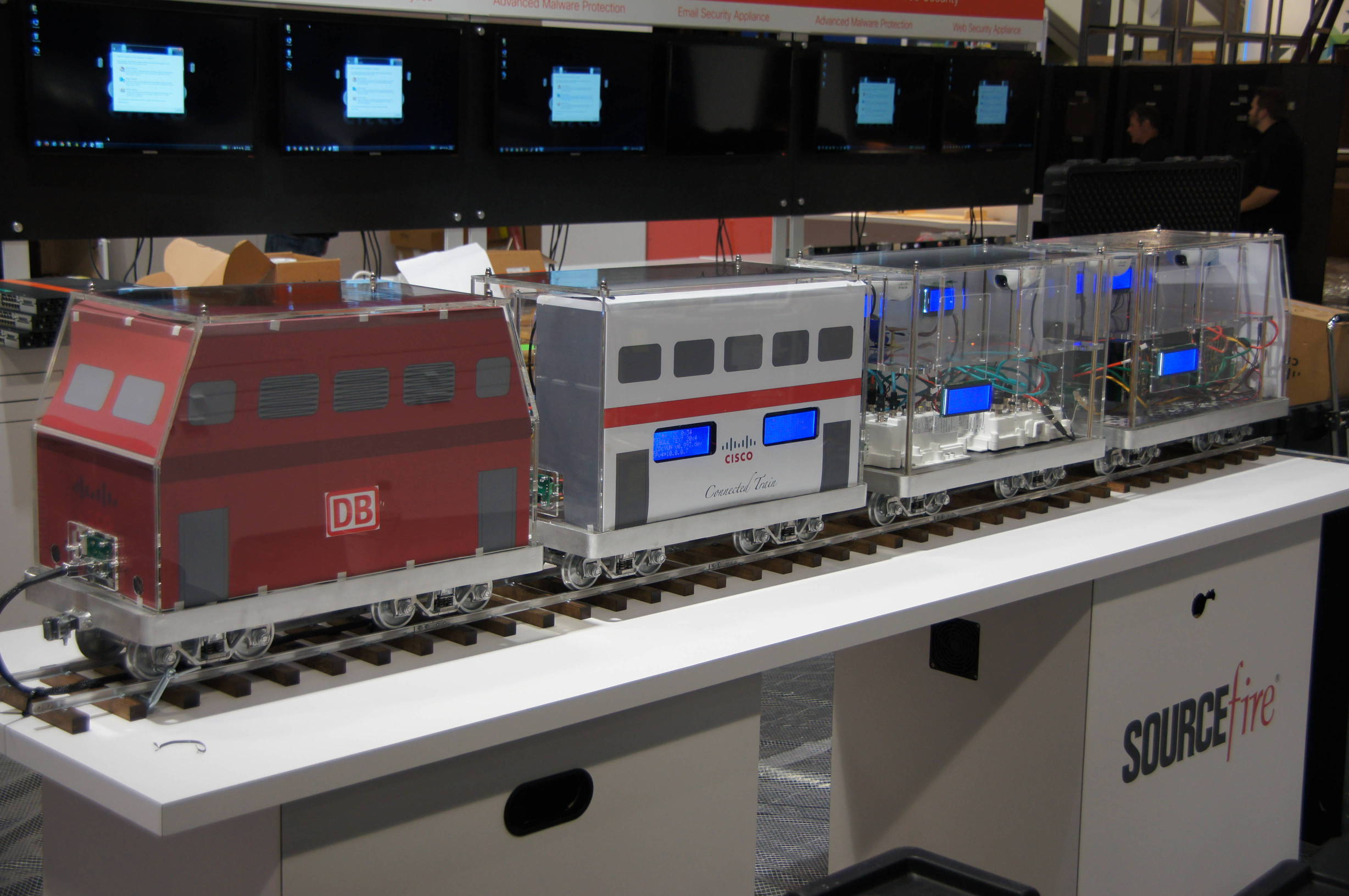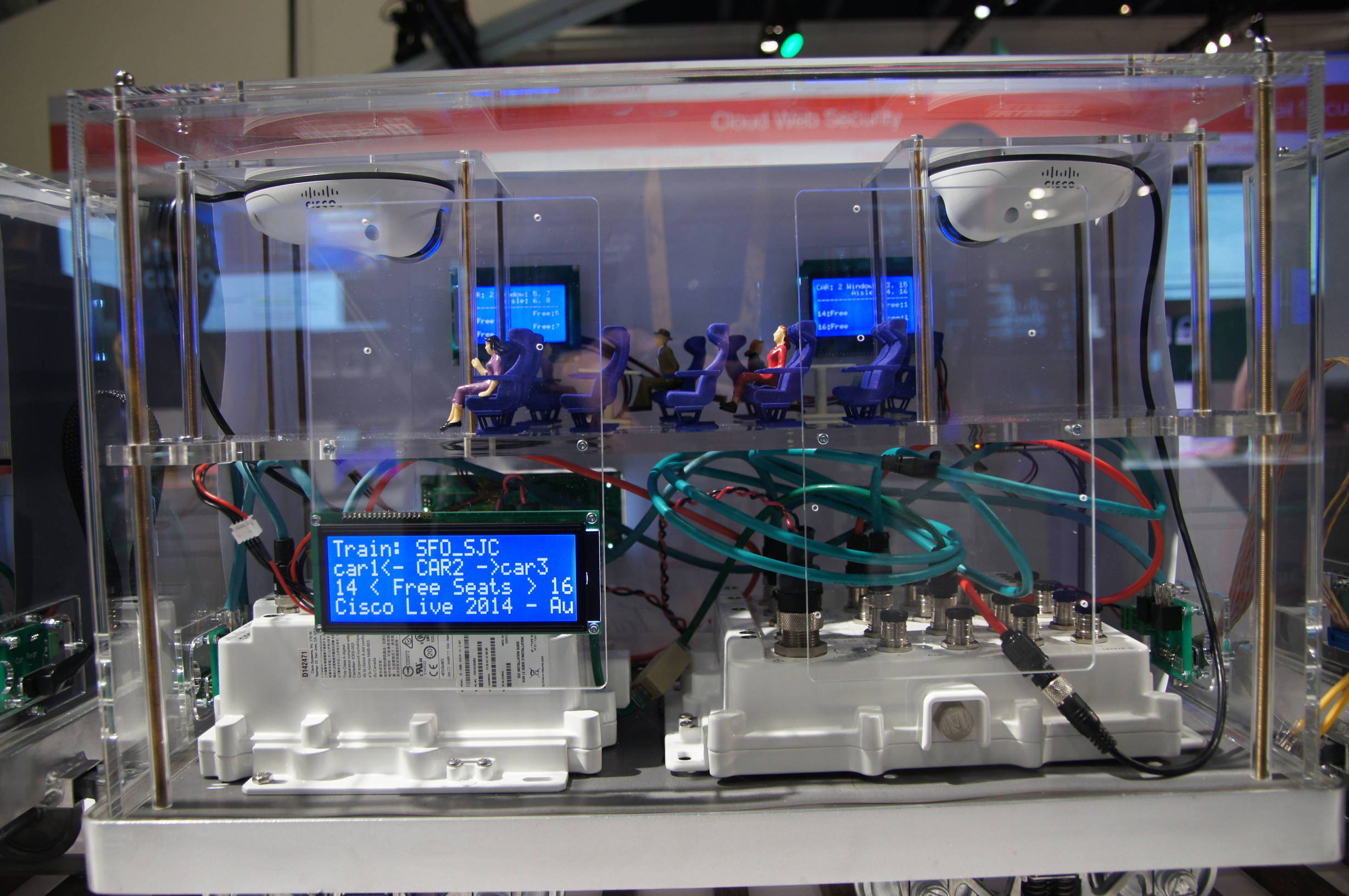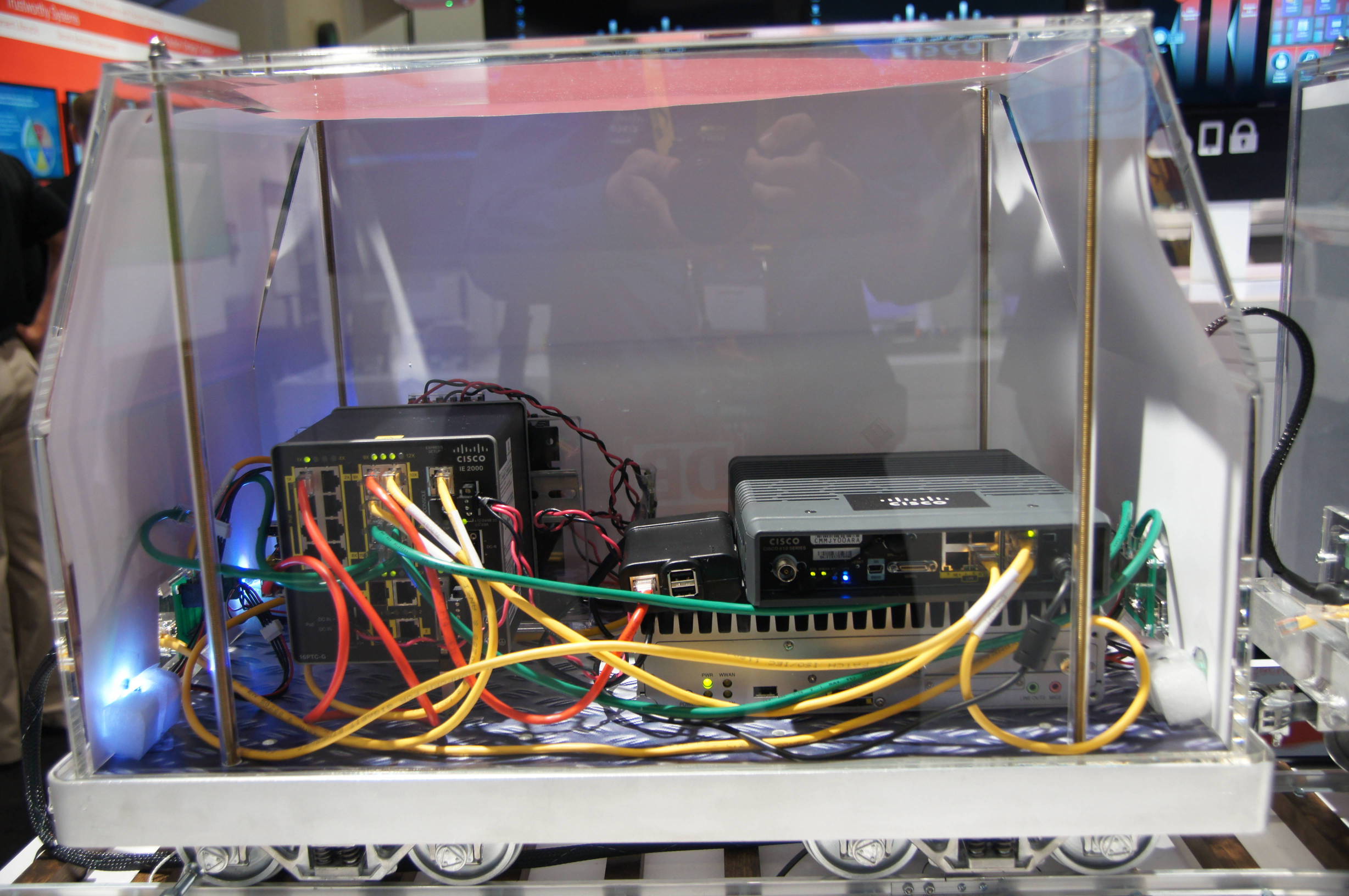 Today at Cisco Live we started to show a train model that we use as a testing/validation vehicle for applicable train technologies.
Today at Cisco Live we started to show a train model that we use as a testing/validation vehicle for applicable train technologies.
At Cisco Live, the train includes our Cisco IE2000 industrial switches (IP67 and non IP67 versions), Cisco-819 M2M router, our target application hosting server-PC with VSMS and an even smaller application hosting server – a Raspberry PI.
Every car also hosts our ruggedized Cisco-IPVSC-6050 cameras and a demo version of a passenger information system (PIS) with both outside-train LCD and top-of-seat LCD panels. This is built on a Arduino/Linux prototype platform. Cameras and PIS-devices are PoE powered from our switches.

This setup shows how Cisco IOS networking infrastructure can provide an agile platform for in-train convenience applications – PIS, Surveillance, Internet, Media Streaming, etc. With IP connected client devices, these business applications can be built as easily as web applications – and they can equally easily be expanded and adopted to changing requirements. Given how most train operators already use Web development for outside-train applications such as eCommerce/business-process/web presence/ticketing, this makes it easy for them to build out such convenience application in their trains.
A key component of making these business applications work automatically in a train environment is topology awareness of the train: Every time train cars and engines are being put together to form a train, the business applications need to adopt to the new train topology.

The PIS shows on every car the right logical car number and directions where the beginning and end of train are. The surveillance application is able to display the right camera for every car. Online seat reservations are equally enabled with this IP connected train technology. PIS display shows how many seats are free in each direction on the train – which is different on every car. When trains are known to drive in reverse order, renumbering of seats can take place. This renumbering could be intelligent and allows passengers to book a seat in or against the direction of the train, so the seat is guaranteed even when cars are turned around because seats will automatically be renumbered when this happens.
Most of these use case workflows are being shown at Cisco Live with the written demo/prototype application: purely web based, browser on a tablet as the user interface for passengers and train personnel.
To make the development of such convenience applications easier, we leverage a new common cross-market segment software architecture in IOS that is today unique to

Cisco: Autonomic Networking (AN). AN is already shipping on Service Provider IOS platforms and is currently being integrated into the IE and enterprise switch platforms to ship later in 2014/early 2015. Autonomic Networking is bundled within Cisco’s overall “Plug & Play” Software architecture. The core benefits of our Autonomic Networking infrastructure software are secure zero touch device/network bootstrap and automatically built reliable connectivity for ongoing provisioning, monitoring and troubleshooting. AN also enables intelligent autonomic network wide services.
The Autonomic Topology service is one of the first intelligent network-wide services that we plan to ship: Talking only to a single device in the network, a business application can retrieve the full topology of the (train) network including all the relevant information about connected client devices such as cameras or PIS client devices. This topology information is even available when parts of the network are either configured incorrectly, or not configured at all.
If you are interested in any or all aspects of this solution, please visit us to the IoT booth at the World of Solutions during this week. Please feel free to reach out with further questions.
See also: http://youtu.be/2YUmMQS6vR4 on Ciscos Youtube channel http://www.cisco.com/User/Cisco
Oh, and for a real good walk through the underlying Autonomic Networking technology, check out the real good clip from Yves and Akshat: https://www.youtube.com/watch?v=aFXCtfWBFOY